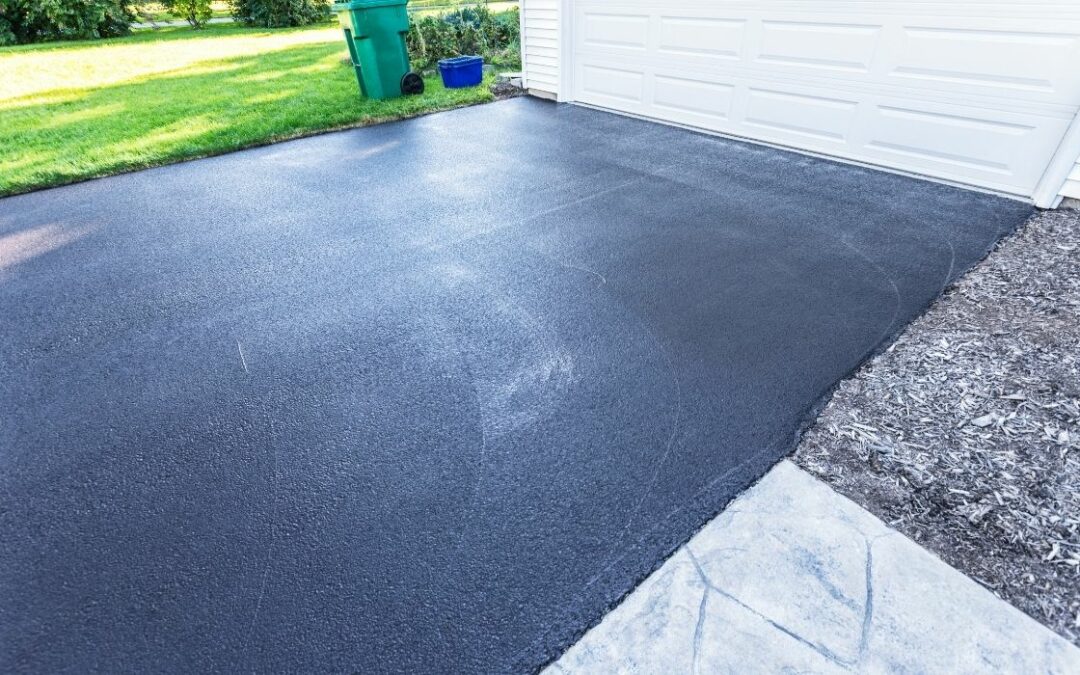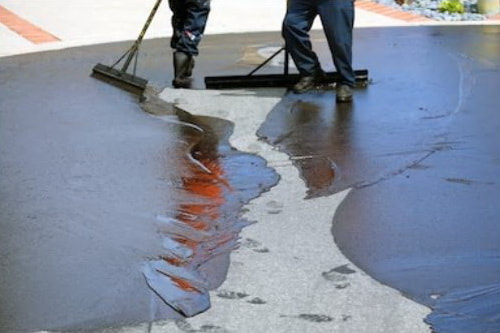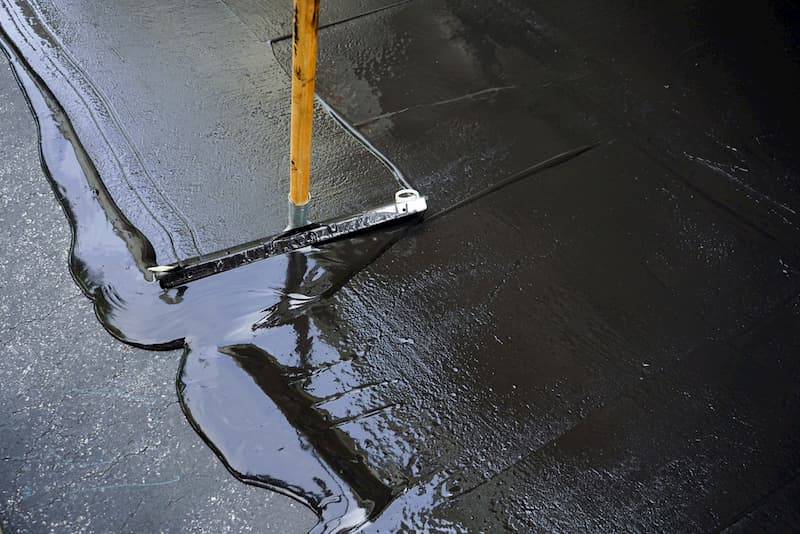Unlock the Secrets of Asphalt Sealing: Making Best Use Of Warm Mix Asphalt Durability
Wiki Article
Warm Mix Asphalt: A Sustainable Service for Pavement
Warm Mix Asphalt (HMA) has actually arised as a leading sustainable option for sidewalk services, offering a myriad of ingenious modern technologies and ecological advantages. As the demand for eco-friendly building and construction techniques grows, discovering the nuances of HMA's sustainability can provide important understandings right into the future of pavement remedies.Environmental Advantages of Warm Mix Asphalt

Furthermore, Warm Mix Asphalt helps to alleviate city heat island results. Its dark color soaks up sunlight, decreasing the amount of heat mirrored back right into the atmosphere contrasted to lighter-colored pavements. This can decrease ambient temperature levels in city areas, reducing the demand for a/c and inevitably lowering energy consumption.
On top of that, Hot Mix Asphalt contributes to enhanced stormwater management. Its porous nature permits water to recharge and penetrate the pavement groundwater materials, lowering overflow and the danger of flooding. These environmental benefits make Hot Mix Asphalt a lasting option for leading roadways and highways.
Power Effectiveness in HMA Manufacturing
Is energy effectiveness an essential aspect in the production of Hot Mix Asphalt (HMA)? Energy plays a substantial role in the manufacturing of HMA, affecting both expense and ecological sustainability. One vital facet of power effectiveness in HMA production is the usage of warm mix asphalt (WMA) modern technologies.Moreover, developments in plant technologies have actually led to more energy-efficient HMA manufacturing processes. By maximizing energy usage in HMA production, the market can lower its carbon impact while keeping premium sidewalk products.
Recyclability of Hot Mix Asphalt
The recyclability of Warm Mix Asphalt (HMA) is a pivotal aspect of its sustainability and lasting ecological effect. HMA is one of the most recycled materials in the United States, with over 100 million lots of reclaimed asphalt pavement (RAP) being reused annually in new sidewalk construction. Recycling HMA supplies a number of environmental advantages, such as reducing the demand for virgin materials, reducing energy consumption during manufacturing, and reducing the amount of waste sent to land fills.The process of reusing HMA involves milling the existing sidewalk, squashing it right into smaller pieces, and blending it with new accumulation and asphalt binder to create a recycled mix. Overall, the recyclability of HMA plays a substantial duty in promoting sustainable practices within the sidewalk market.

Long-Term Efficiency of HMA
Asphalt sidewalks show find more information longevity and resilience over an extended duration, mirroring the lasting efficiency of Hot Mix Asphalt (HMA) The longevity of HMA can be connected to its capability to hold up against hefty website traffic tons, harsh weather, and the results of aging. Researches have shown that well-designed and properly constructed HMA pavements can last for twenty years or more with routine upkeep. The trick to maximizing the lasting performance of HMA depends on using top notch products, complying with finest practices in building, and implementing efficient maintenance approaches. Appropriate drain, regular evaluations, and timely repairs are vital for protecting the architectural honesty of HMA pavements over time. Additionally, developments in HMA modern technology, such as the usage of polymer-modified binders and cozy mix asphalt, have actually additionally enhanced the resilience and durability of HMA sidewalks. By prioritizing high quality building and upkeep techniques, HMA remains to show itself as a sustainable and cost-efficient service for lasting pavement infrastructure.
HMA: Sturdiness and Sustainability
Showing both resilience and sustainability, Warm Mix Asphalt (HMA) has actually come to be a cornerstone in the building and construction of long-lasting sidewalk infrastructures - angled parking. HMA's toughness stems from its capability to hold up against hefty tons, rough climate problems, and high web traffic quantities, making it a trustworthy selection for roadways, highways, and flight terminal runways. The make-up of HMA, which normally includes accumulations, binder, and filler, plays a crucial duty in boosting its longevity and resistance to tear and use
Furthermore, HMA's sustainability depends on its recyclability and energy-efficient manufacturing procedure. The ability to recycle recovered asphalt pavement (RAP) in new HMA mixes minimizes the need for virgin products and minimizes the ecological influence of pavement building and construction and maintenance. Additionally, the power efficiency of generating HMA hinges on its lower blending temperatures compared to other sidewalk products, causing minimized power intake and greenhouse gas exhausts.
Verdict
To conclude, hot mix asphalt (HMA) provides a sustainable service for sidewalk with its eco friendly features. HMA's recyclability, energy Clicking Here efficiency in manufacturing, and lasting longevity make it an environmentally friendly option for roadway building. By conserving natural resources, decreasing waste, and lowering greenhouse gas exhausts, HMA plays an essential duty in promoting sustainability in infrastructure development. Its capability to mitigate city warmth island effects further underscores its relevance in producing you could try this out resistant and environmentally mindful sidewalk systems.
HMA is one of the most recycled products in the United States, with over 100 million heaps of recovered asphalt sidewalk (RAP) being reused yearly in new sidewalk building and construction.The procedure of recycling HMA entails milling the existing sidewalk, crushing it into smaller items, and mixing it with new aggregate and asphalt binder to create a recycled mix.Asphalt sidewalks show resilience and durability over a prolonged period, showing the lasting performance of Hot Mix Asphalt (HMA) In addition, improvements in HMA innovation, such as the use of polymer-modified binders and cozy mix asphalt, have even more improved the durability and longevity of HMA pavements. The capacity to reuse redeemed asphalt sidewalk (RAP) in brand-new HMA combinations minimizes the need for virgin products and lessens the environmental impact of pavement building and construction and upkeep.
Report this wiki page